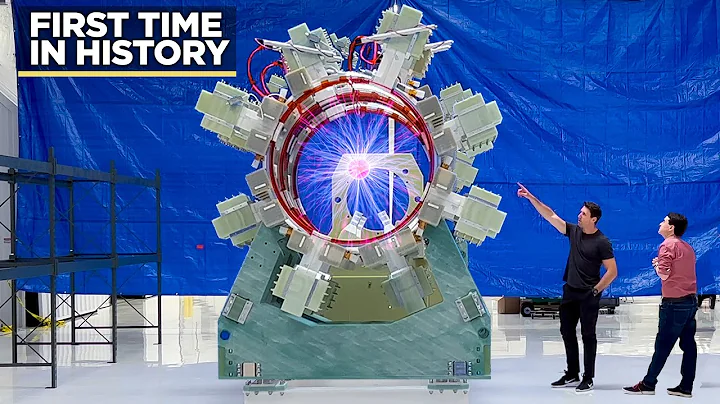
The prospect of nuclear fusion is tantalizing: by harnessing the same atomic process that powers our sun, we may one day be able to generate nearly unlimited amounts of clean energy.
But while fusion reactors have been around since the 1950s, scientists have not yet been able to create a design that can produce energy sustainably. Politics, lack of funding, concerns about power sources, and potentially insurmountable technical problems are some of the obstacles holding back nuclear fusion. Today, the fusion reactors we have are still in the prototype stage.
However, New Jersey researcher Michael Zarnstorff may have had a big breakthrough recently while helping his son on a science project.
In a new paper, Zarnstorff, chief scientist at the Max Planck Princeton Plasma Physics Research Center in New Jersey, and colleagues describe a simpler design for a stellarator, one of the most promising nuclear fusion reactors. .
Fusion reactors generate electricity by collision or fusion of two nuclei to produce one or more heavier nuclei. This process can release a lot of energy. But achieving convergence is difficult. It requires heating the hydrogen plasma to over 100,000,000°C until the hydrogen nuclei fuse and generate energy. Not surprisingly, this ultra-high temperature plasma is difficult to work with, and can damage and corrode the reactor's expensive hardware.
Stellar accelerator is a device that uses external magnets to "twist" the flow of hot plasma in a specific way to control and evenly distribute the hot plasma. To do this, stellar accelerators are equipped with a complex series of electromagnetic coils that create an optimal magnetic field within the device.
"The spiral coil is the most expensive and complex part of the stellarator and must be manufactured with very high precision in a very complex form," said physicist Per Holland, lead author of the new paper. The new
design offers a simpler approach, instead using permanent magnets , whose magnetic field is generated by the internal structure of the material itself. As described in an article published in Nature, Zarnstorff realized that neodymium-boron permanent magnets performed like refrigerator magnets, and that only stronger permanent magnets could become powerful enough to potentially help control plasma in stars. . "His team's conceptual design combines a simpler ring-shaped superconducting coil with pancake-shaped magnets attached to the outside of the plasma vacuum vessel,"

wrote in an article published in the journal Nature. "Like Like refrigerator magnets that only stick to one side, these magnets primarily create a magnetic field inside the container."
In theory, using permanent magnets on Stellar machines would be simpler and more affordable, and would free up valuable space on the device. But the researchers did note some drawbacks, such as "limitations in magnetic field strength, instability, and the possibility of demagnetization."
In any case, commercial fusion energy, if any, will not appear anytime soon. However, in addition to new stellarator design concepts, there have been some interesting developments in recent years. One of the most notable examples is the International Thermonuclear Experimental Reactor (ITER).
ITER announced last year that it hopes to complete the construction of the world's largest tokamak fusion reactor by 2025. The goal of the project is to prove that commercial nuclear fusion is possible by demonstrating that the reactor can produce more energy than it consumes. But even if the ITER experiment succeeds, the fusion power plant may not come online until at least 2050.
Achieving sustainable fusion energy on Earth remains a "major scientific challenge" with an uncertain future. Additionally, some scientists question whether this energy source is really as clean, affordable and safe as many claim. But new insights into the design of nuclear fusion reactors, as described in a new paper, could help speed up the process of developing what could one day become a major energy source for a post-carbon society.





















